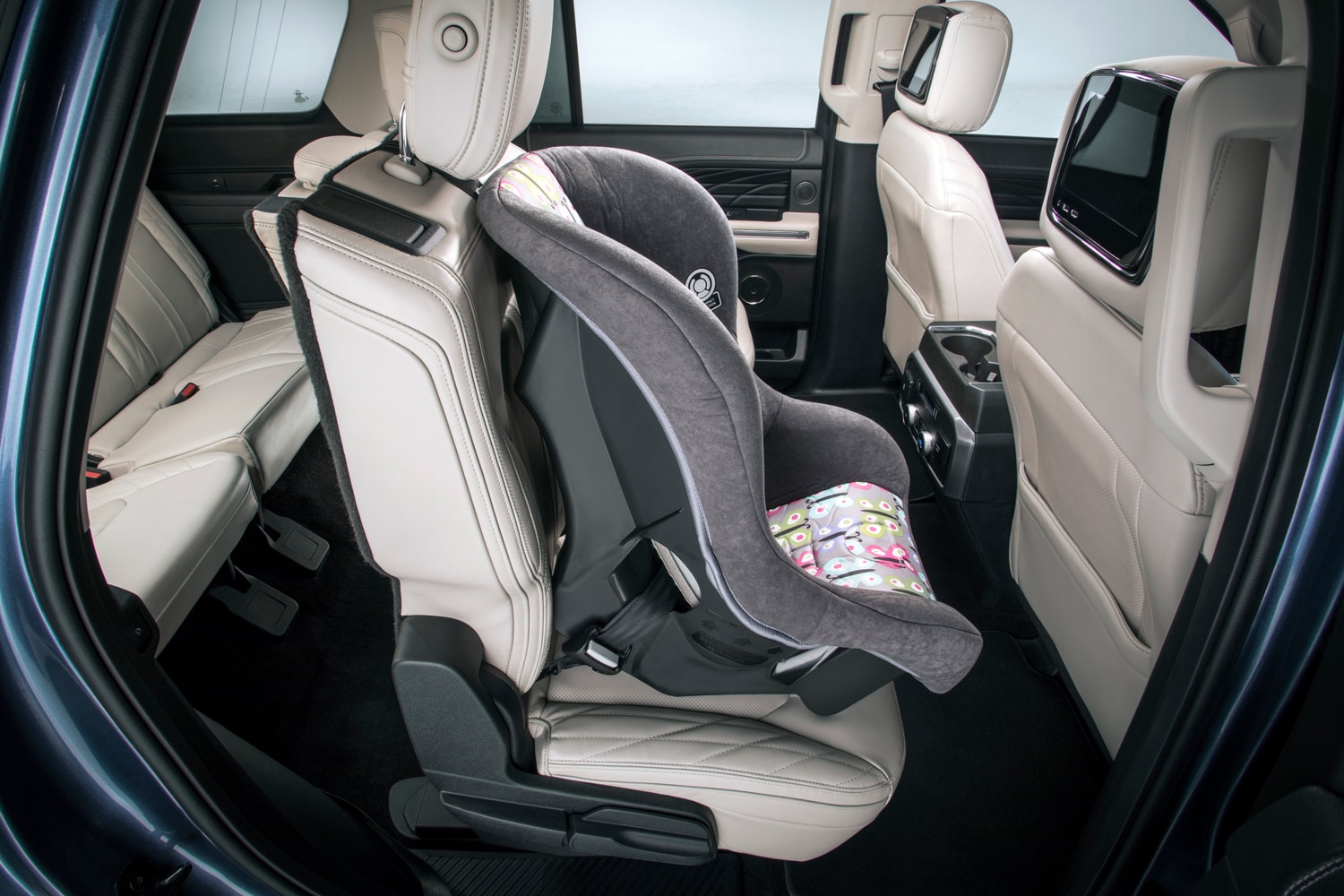When Should a Child Seat Face Forward?
It comes down to the height and weight of your little one.
 Ford
Ford
While riding in a rear-facing seat, your child might tire of asking, “Are we there yet?” and instead ask, “When can I face forward?” The short answer is: once you’re big enough for it.
The long answer is that it depends on the child and the particular safety seat. The National Highway Traffic Safety Administration and the American Academy of Pediatrics implore parents to keep their children in rear-facing seats for as long as possible and at least for the first 12 months of their lives. That’s because rear-facing designs better restrict head movement and distribute crash forces more evenly across the child’s body than forward-facing ones. Were you to slam on the brakes with your infant facing the front of the car, their head would likely whip forward with the car’s momentum, possibly resulting in spinal injury. A rear-facing seat, however, is designed to cushion the head and neck in such a situation. This is why all dedicated infant carriers are rear-facing only.
There will come a time, however, when your child’s neck can adequately support their head and their body will no longer fit in a rear-facing orientation. That’s when you’ll need a forward-facing car seat.
Making the Switch to Front-Facing
Whether you start with an infant carrier or a convertible seat (which accommodates infants and toddlers), you’ll end up using the latter at some point. Once your child outgrows that model’s height or weight limit for rear-facing use, it’s time to reposition the seat to face forward. This will likely occur when your child is between 1 and 3 years old. Please note that these weight and height maximums vary by the seat, but many require the change from rear facing to front once a child reaches 50 pounds or 49 inches tall.
Installation Methods
A forward-facing car seat might involve a different installation technique than you used for your rear-facing seat. All modern vehicles have the Lower Anchors and Tethers for Children restraint system, better known as LATCH. In most cases, the lower anchors nestled between the seatback and bottom can support a child-laden, forward-facing car seat as long as the total weight is less than 65 pounds. Defer to the owner’s manuals for both your vehicle and car seat to find the LATCH specs and go with the most conservative, or lowest, limit. If the combined weight of your child and the car seat exceeds this maximum, you’ll need to thread a seat belt through designated areas on the car seat to secure it to the vehicle.
Once you’ve attached the bottom of the seat to the lower anchors or seat belt, you’ll need to tether the top of the car seat to a rigid anchor in your vehicle to prevent the seat from tilting forward in a collision. On SUVS and minivans, these anchors are often integrated into the back of a seat. On passenger cars, they’re likely just below the rear window.
Written by humans.
Edited by humans.
 Evan McCausland
Evan McCauslandCar, truck, train, or bus—if a vehicle has wheels, chances are Evan McCausland is interested in it. More importantly, he’s interested in helping others learn more about cars and trucks, especially when it comes time to make a decision on their next vehicle purchase. For nearly two decades, he’s been fortunate to have the opportunity to do just that, writing for major automotive publications, automotive clubs, and automakers alike.
Related articles
View more related articles